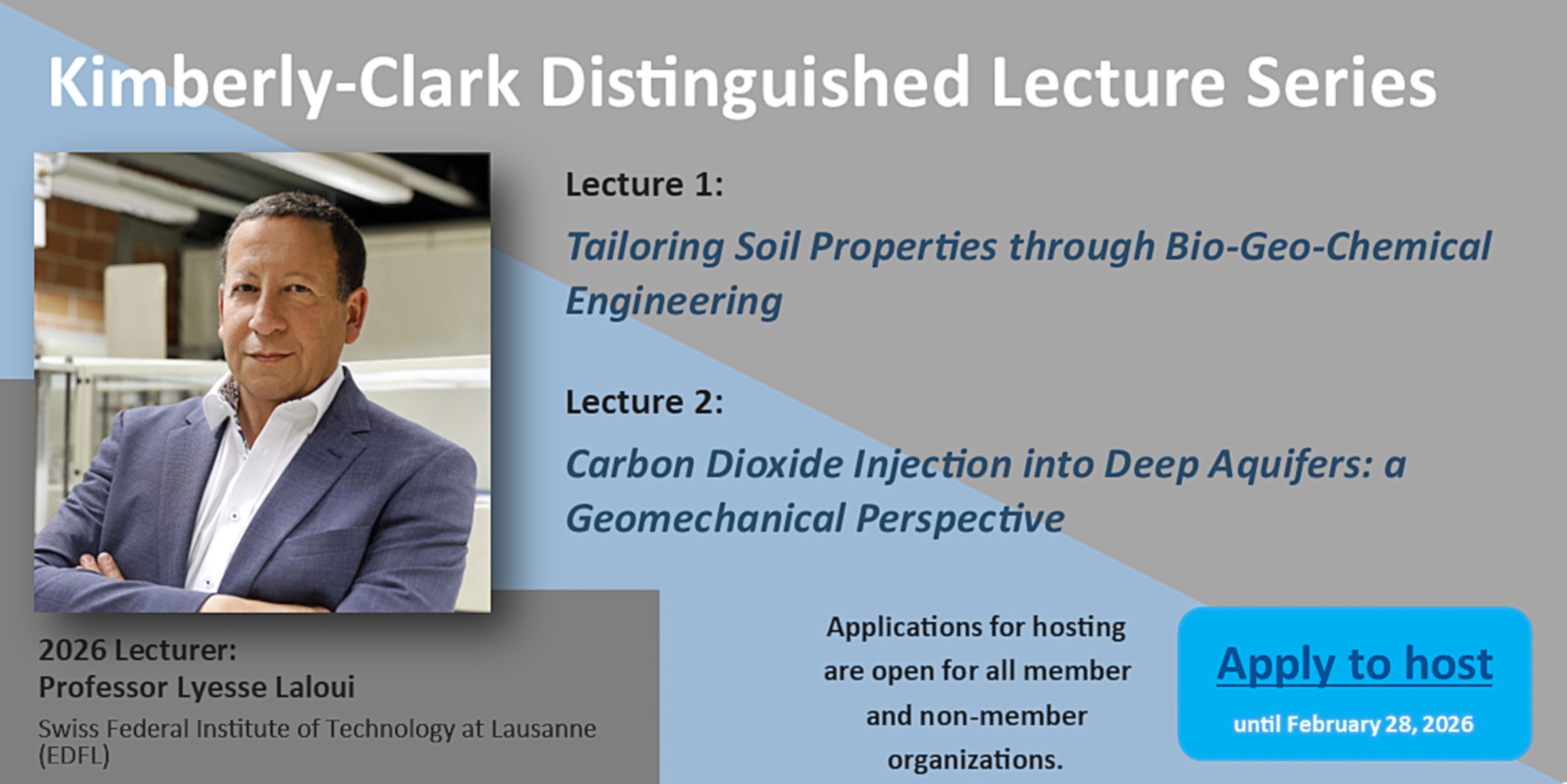The InterPore Council met on September 24 via zoom. While the agenda included a few minor bu

Make a donation to enable students and researchers to contribute to InterPore2026

Prof. Lyesse Laloui, from the Swiss Federal Institute of Technology at Lausanne (EPFL), Lausanne, Switzerland, is the Kimberly-Clark Distinguished Lecturer of 2026.
As the winner of this year’s distinguished award, Prof. Lyesse Laloui will be giving one of his two lectures at selected institutions. Hosts may select one of two options:
Lecture 1: Tailoring Soil Properties through Bio-Geo-Chemical Engineering
Lecture 2: Carbon Dioxide Injection into Deep Aquifers: a Geomechanical Perspective

The 18th Annual InterPore Conference will take place in Nantes, France from May 19-22, 2026. Join us for fascinating lectures, engage with fellow researchers from across the globe and discover cutting-edge exploration of porous media.

InterPore, the International Society for Porous Media, is a non-profit, independent scientific organization founded in 2008. We are a dynamic and rapidly growing global community, bringing together members from academia and industry. Our mission is to advance and disseminate knowledge to enhance the understanding, description, and modeling of natural and industrial porous media systems.
Your contribution can shape the future of scientific innovation. Many brilliant researchers and students face financial barriers that limit their ability to attend the InterPore Conference, Academy Short Courses, Workshops, and national chapter meetings. By donating to the InterPore Foundation, you directly support students and researchers from countries with economic difficulties, empowering them to share their work, engage in meaningful collaborations, and push the boundaries of porous media research.
Expand your network by attending InterPore conferences and events at discounted member rates. Connect with global leaders in porous media science to exchange ideas and foster collaborations. You can also become more involved by volunteering to help out with one of our committees or by joining a local InterPore chapter in your country. It's a great way to stay engaged, contribute to the community, and expand your professional network.
The InterPore Academy of Porous Media, established in 2020, is dedicated to advancing and sharing knowledge on natural, biomedical, and industrial porous media systems—supporting InterPore's broader mission. We invite you to take part in our wide range of educational and training opportunities, including interactive courses, expert-led webinars, and our informal and insightful TeaTimeTalks. Whether you're looking to deepen your expertise, explore new topics, or connect with others in the field, there's something for everyone at InterPore Academy.
Join us for inspiring lectures, connect with researchers worldwide, and explore cutting-edge advancements in porous media. Our Events include a wide range of activities hosted by InterPore, such as our flagship annual conference, upcoming courses and webinars, and other educational initiatives. In addition, we highlight partner events that align with our mission and may be of interest to our members, as well as external events related to porous media. There's always something happening in the world of porous media—stay informed and get involved!
InterPore Honors & Awards are funded by the Foundation and were established to recognize InterPore members who have made outstanding contributions to porous media science and technology or provided exceptional service to the porous media community. These awards celebrate researchers at various stages of their careers, acknowledging their achievements and dedication.
The latest news articles selected for you.
The InterPore Council met on September 24 via zoom. While the agenda included a few minor bu
Did you know that InterPore Jou
The following statement reflects the views of the InterPore Executive Committee regarding diversi
We are very pleased to have Eric Morales-Casique join the board of the InterPore Foundation. 
Explore our list of upcoming events and join us to connect, learn, and share insights!
Expand your knowledge and join our academy.
At this moment there are no courses available. Please come back soon
The InterPore Academy of Porous Media was established in 2020. Our mission is to support the advancement and dissemination of knowledge for understanding, describing, and modeling natural, biomedical, and industrial porous media systems, in line with InterPore’s objectives. We promote InterPore's educational, training, and research activities through courses, webinars, thematic workshops, and Young Academy initiatives.
Click below to suggest a topic or to nominate yourself or a colleague as Lecturer.